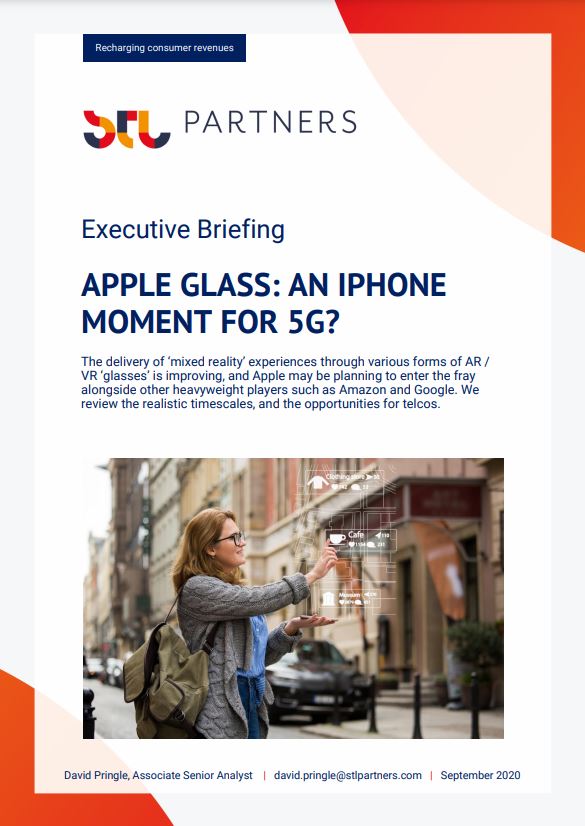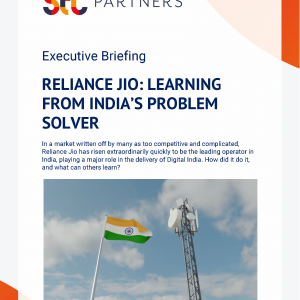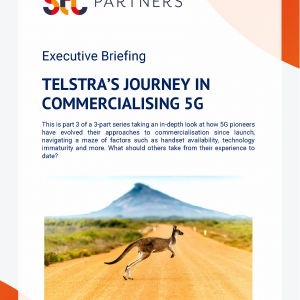Apple Glass: An iPhone moment for 5G?
£1,000.00 excl VAT
The delivery of ‘mixed reality’ experiences through various forms of AR / VR ‘glasses’ is improving, and Apple may be planning to enter the fray alongside other heavyweight players such as Amazon and Google. We review the realistic timescales, and the opportunities for telcos.
Description
Format: PDF filePages: 64 pagesCharts: 24Author: David PringlePublication Date: September 2020
Table of Contents
- Executive Summary
- More mainstream models from late 2022
- Implications and opportunities for telcos
- Introduction
- Progress and Immediate Prospects
- The pioneers of augmented reality
- Impact of the pandemic
- Snap – seeing the world differently
- Facebook – the keeper of the VR flame
- Google – the leader in image recognition
- Apple – patiently playing the long game
- Microsoft – expensive offerings for the enterprise
- Amazon – teaming up with telcos to enable AR/VR
- Market forecasts being revised down
- Telcos Get Active in AR
- South Korea’s telcos keep trying
- The global picture
- What comes next?
- Live 3D holograms of events
- Enhancing live venues with holograms
- 4K HD – Simple, but effective
- Technical requirements
- Extreme image processing
- An array of sensors and cameras
- Artificial intelligence plays a role
- Bandwidth and latency
- Costs: energy, weight and financial
- Timelines for Better VR and AR
- When might mass-market models become available?
- Implications for telcos
- Opportunities for telcos
- Appendix: Societal Challenges
- AR: Is it acceptable in a public place?
- VR: health issues
- VR and AR: moral and ethical challenges
- AR and VR: What do consumers really want?
- Index
Table of Figures
- Figure 1: Examples of AR use cases and the demands they make on connectivity
- Figure 2: Pokemon Go is still earning major revenues four years after its debut
- Figure 3: Plessey envisions that its technology will allow for lightweight AR glasses
- Figure 4: The definition of six degree of freedom for VR
- Figure 5: Google Maps now uses augmented reality to help with navigation
- Figure 6: The Google Lens app seems to be highly-rated by its millions of users
- Figure 7: The HoloLens 2 overlays digital images onto transparent glasses
- Figure 8: AWS Wavelength keeps latency-sensitive traffic within the mobile network
- Figure 9: Amazon’s Echo Frames may be too chunky or indiscreet for many people
- Figure 10: SuperData sees only modest growth in sales of AR software
- Figure 11: Nreal’s new AR glasses are light but need a cable for processing power
- Figure 12: BT Sport’s vision of how people might watch football in future
- Figure 13: A live VR stream can make the viewer feel like they are at the venue
- Figure 14: Delivering fully immersive VR content will be very bandwidth-intensive Figure 15: Interactive VR requires much lower latency than 360° video
- Figure 16: Edge computing and telco cloud could get latency low enough for VR apps
- Figure 17: The bulky Magic Leap One is wired to a belt-mounted computer
- Figure 18: Smart Sunglasses need to be chunky to fit in all the necessary tech
- Figure 19: Vuzix plans to deliver a new generation of smart glasses in 2021
- Figure 20: MicroLED-based display engines to be more compact than predecessors
- Figure 21: Prototype headsets based on the latest Qualcomm chipsets
- Figure 22: The likely timeline for immersive VR with a wireless headset
- Figure 23: The likely timeline for outdoor AR with a wireless headset
- Figure 24: The timeline for live 3D holographic projections using wireless AR headsets
Technologies and industry terms referenced include: 5G, Amazon, apple, AR, AR/VR, Augmented Reality, consumer, edge computing, enterprise, entertainment, extended reality, facebook, Games, glasses, google, immersive, interactive, microsoft, mixed reality, qualcomm, smart glasses, smartphones, sports, telcos, Telecoms, Use cases, Verizon, video, virtual reality, VR, XR


